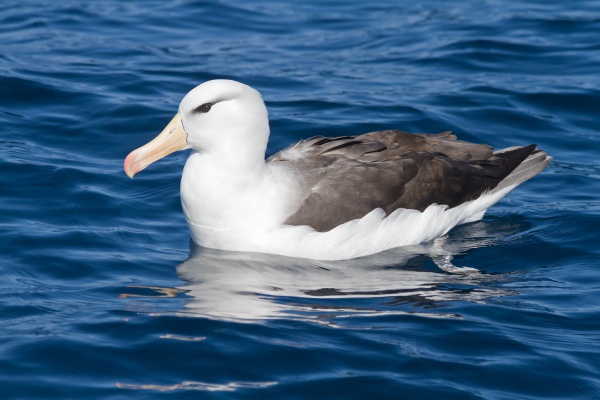Facts About Black-browed albatross
The black-browed albatross, also known as the black-browed mollymawk, is a large seabird and the most frequently encountered member of the albatross family, Diomedeidae. It belongs to the Procellariiformes order, notable for distinct features like nasal passages that connect to the upper bill and a unique bill structure. There has been some debate about whether the Campbell albatross should be classified as a separate species from the black-browed albatross.
The scientific name "melanophris" derives from the Greek words meaning "black" and "eyebrow" emphasizing the dark feathers around the bird’s eyes. This medium-sized bird is easily identifiable by its dark brow, white underparts, and yellow-orange bill. It breeds on various southern ocean islands and ranges across the southern hemisphere.
Behaviorally, black-browed albatross colonies are quite vocal, with birds using sounds to stake out their territories. Their diet consists of fish, squid, crustaceans, carrion, and bycatch from fishing vessels. They breed annually, typically building nests on steep, grassy slopes. Conservation efforts are ongoing for this species, as their population has been declining due to threats such as longline and trawl fishing.
Occasionally, black-browed albatrosses appear far from their usual habitats, a behavior known as vagrancy. There have been sightings in places such as Scottish gannet colonies, the Faroe Islands, the Bahamas, and other unexpected locations. These rare sightings provide valuable insights into their movement patterns and adaptability.

 Ireland
Ireland